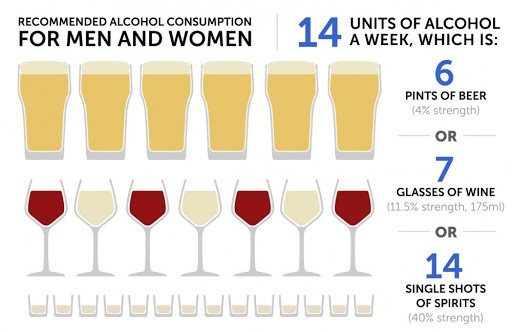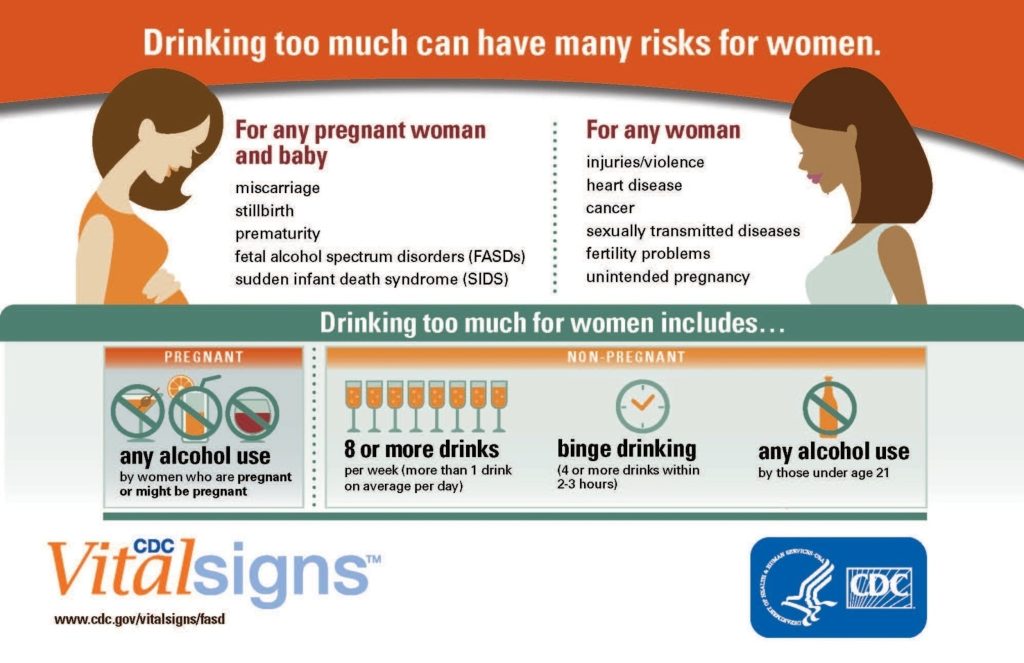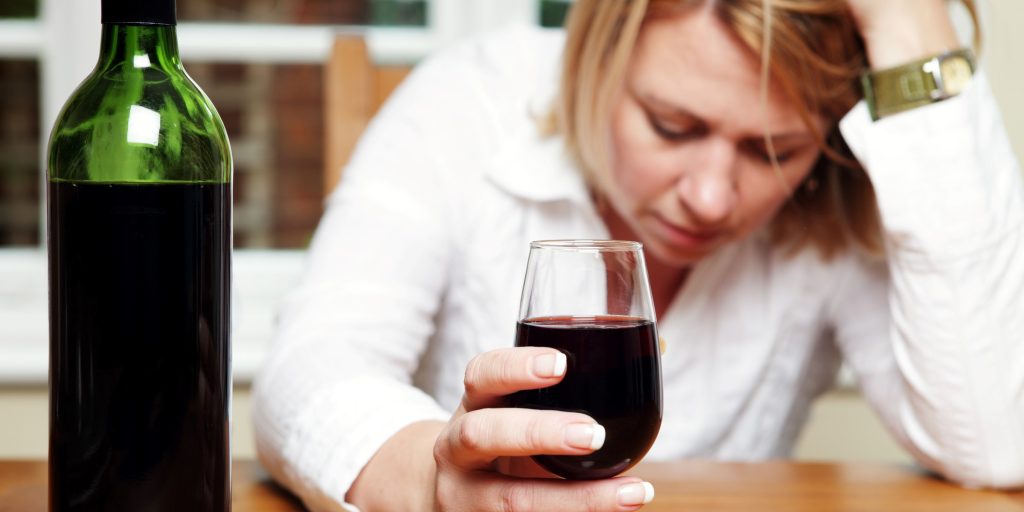Women and Alcoholism
The effect of alcohol on women’s bodies or alcohol addiction is an increasing problem.
While the majority of people who suffer from drinking heavily are male, women and alcoholism are becoming more prevalent issues. If you are a woman who suffers from excessive drinking, there are important facts you should know about how this can affect you.
Here we examine the differences in the consequences that women generally experience due to alcoholism and why treatment should ideally be adapted to account for this.
Women metabolise alcohol differently.
Women have completely different body compositions and, as a result, metabolise alcohol differently. In general, the alcohol limit for women is different than for men.
Because alcohol remains in body water, females, who have a far higher body water percentage, hold alcohol in their bodies for a longer time.
Women also tend to weigh less. The same amount of alcohol creates a higher blood alcohol content in a woman than a man. Also, it stays in a woman’s system for longer.
Previously, the gender difference was recognised by the Chief Medical Officers safe drinking guidelines and recommended alcohol limit for women of no more than 14 units per week and no more than 21 for men. The guidelines have been reviewed and consequently changed to no more than 14 units in a week, regardless of gender.

Whilst it is positive that the amount for men has reduced to be considered safe, it gives a false impression that men and women are affected equally.
Why do women face higher risks?
Although statistics show that men are up to twice as likely to drink and consume larger quantities of alcohol, the biochemical structure of the female gender causes most women to absorb more of it into the bloodstream and take longer to process it than it would a man.
This means that the toxins stay in the bloodstream and the system of a woman longer. It is these toxins that cause damage to every internal organ it comes into contact with.
Women are at higher risk of developing the following long-term alcohol-related health risks:
- Alcohol-related heart disease – Women are at higher risk of developing heart problems and disease, and over a shorter period of time
- Alcohol-related cancers – Women are more vulnerable to developing cancers directly caused by alcohol consumption, even at low levels. These cancers are breast cancer and cancer of the mouth, throat, oesophagus, liver and colon
- Liver disease and liver cirrhosis – Females are more susceptible to liver damage from alcohol
- Sexual harms – Women are at higher risk of suffering sexual harm related to alcohol consumption, including suffering from sexual violence, abuse, and rape, which are often linked to binge drinking. Women are also at higher risk of unwanted pregnancy whilst heavily intoxicated.
- Domestic violence – Women are more vulnerable to suffering from domestic violence; again, this has been strongly linked to excessive binge drinking
- Alcohol-related brain damage – Alcohol causes shrinkage of the brain by damaging cells, tissues and pathways. This can lead to short term memory loss, cognitive impairment, anxiety and depression. At the worst end of the scale, excessive and prolonged drinking can lead to Wernicke’s encephalopathy and korsakoff’s syndrome.
Pregnant women & drinking
The consequences of women drinking during pregnancy are unique to the female gender and are very real. The government has advised that there is no known safe amount of alcohol use during pregnancy.

Source: CDC
In a recent study conducted on pregnant women, 10% of participants said they continued to drink throughout their pregnancy, with 4.5% admitting to binge drinking.
If not too far advanced, the alcoholic woman will usually return to it post-pregnancy if they can abstain during pregnancy. In the more advanced stages, others will struggle to abstain, moderate or control their drinking, despite the fact they are carrying their unborn child.
Drinking during pregnancy increases the risk of :
- Miscarriage
- Premature delivery
- Stillbirth
- Sudden Infant Death Syndrome (SIDS)
- Fetal alcohol spectrum disorders (FASD).
FAS disorders can range from mild to severe and debilitating. FASD’s are also the only pregnancy complication that can be completely avoided by abstaining from alcohol
Statistics for women and drinking in the UK
The most recent publication released by the Office of National Statistics showed the registration of 7,565 alcohol-specific deaths in the UK for 2019. This is the second-highest number of deaths since records first began in 2001.
Whilst deaths attributed to both women and men have remained stable in England and Wales, death rates have significantly risen in Northern Ireland and Scotland over the years.
Despite there being a substantial difference in the number of women who drink excessively compared to the number of men, shockingly, both are extremely similar (18.8% male and 18.6% female deaths per 100,000 people in Scotland and Northern Ireland).
The gap is most definitely closing between women and men when it comes to deaths attributed to alcohol-specific causes.
How today’s pressures on women are adversely affecting the younger generation
Women today have many expectations placed on them, physically, educationally, socially, occupationally and emotionally. Motherhood brings its own set of unique challenges that rarely come ‘naturally’.
Lifestyle, stress, peer pressure and expectations are all reasons women may turn to heavy drinking. When used in moderation, drinking can be a great social lubricant and stress reliever. However, when alcohol is used in excess, the damage is often more profound and happens quicker in a woman than it does in a man.
These stress factors and expectations are being filtered down to the younger generation, those most susceptible to developing a long term problem.
In a study conducted on young people attending Secondary school in England (average age range 11-15) on their drug and alcohol use, girls were found to be more likely to have been drunk in the past four weeks than boys.
If this is any indication to go by, it shows that girls are more likely to be influenced by peers and feel the social pressure to ‘fit in’ or drink to get drunk because they like the effect.
This is very worrying as girls and women are much more vulnerable to suffering from sexual assault and unwanted pregnancy whilst under the influence of alcohol.
Women and treatment
On the flip side, despite many more men suffering from problematic alcoholism than women, women are far more likely to seek and engage in treatment.
In England, women represented 40% of those in treatment in 2018/19, despite only 23% of females in the English population suffering from problematic use.
This is good news and shows that women are generally more receptive to getting help, perhaps because they tend to suffer the negative effects of excessive alcohol use more quickly.
Women also tend to have more responsibilities than men, more often being the primary carer for children. Whilst this can initially be an obstacle for a mother who needs addiction treatment, it would seem more and more are seeing the long-term benefits instead of the short term inconvenience and fear of leaving their children to enter treatment.
Alcohol rehab for women
Despite there being a great acknowledgement of the physical, mental, emotional and cultural differences between men and women, female-only rehabs are very few and far between. They are also very difficult to access through funding due to demand on the NHS.
Thankfully, more of the elite and established private rehabs available are recognising the need for more personalised and tailored treatment, with some holding gender-specific groups. Gender-specific groups provide a safe space for both genders to undergo intensive healing, bonding and therapy.
The obstacles and challenges that men and women face when trying to overcome addiction tend to differ on an emotional, occupational, social and family basis. This is why women need to receive bespoke alcohol treatment, applying evidence-based treatment methods.
At Rehab Guide, we do all we can to help each person access the correct bespoke treatment they need to make a full recovery from alcoholism.
We understand the complex nature of addiction and how its many facets affect women differently. We adapt our treatment plans to account for these differences and, more specifically, the person’s treatment needs and requirements.
If you are a woman that needs help with an addiction problem, call our team of friendly and compassionate experts on 02072052845 for a free and confidential assessment and advice around our bespoke private treatment options.
References:
Erol A, Karpyak VM. Sex and gender-related differences in alcohol use and its consequences: Contemporary knowledge and future research considerations. Drug Alcohol Depend 2015;156:1–13.
Chief Medicals Officers alcohol Guidelines Review
https://assets.publishing.service.gov.uk/government/uploads/system/uploads/attachment_data/file/489795/summary.pdf
Rehm J, Shield KD, Weiderpass E. Alcohol Consumption: A Leading Risk Factor for Cancer. In: Wild CP, Weiderpass E, Stewart BW, eds. World Cancer Report. Lyon, France: International Agency for Research on Cancer; 2020:68–76.
Roerecke M, Vafaei A, Hasan OSM, et al. Alcohol consumption and risk of liver cirrhosis: A systematic review and meta-analysis. Am J Gastroenterol 2019;114:1574–1586.
Sexual Violence: Risk and Protective Factors. Centers for Disease Control and Prevention website. Accessed September 30, 2020. Mohler-Kuo M, Dowdall GW, Koss M, Wechsler H. Correlates of rape while intoxicated in a national sample of college women. Journal of Studies on Alcohol 2004;65:37–45.
England LJ, Bennett C, Denny CH, Honein MA, Gilboa SM, Kim SY, Guy GP, Tran EL, Rose CE, Bohm MK, Boyle CA. Alcohol use and co-use of other substances among pregnant females aged 12–44 years — United States, 2015–2018. MMWR 2020;69:1009–1014.
Bailey BA, Sokol RJ. Prenatal alcohol exposure and miscarriage, stillbirth, preterm delivery, and sudden infant death syndrome
Moon RY; Task Force on Sudden Infant Death Syndrome. SIDS and other sleep-related infant deaths: Evidence-based 2016 updated recommendations for a safe infant sleeping environment. Pediatrics 2016;138:e2016–2940.
Fetal Alcohol Spectrum Disorders (FASDs). Centers for Disease Control and Prevention website. Accessed September 30, 2020.
Public Health England (2018). Adult substance misuse treatment statistics 2018 to 2019: report.
Drinking behaviours among children https://digital.nhs.uk/data-and-information/publications/statistical/statistics-on-alcohol/2018/part-5
Alcohol Specific Deaths registered in the UK- 2019 https://www.ons.gov.uk/peoplepopulationandcommunity/healthandsocialcare/causesofdeath/bulletins/alcoholrelateddeathsintheunitedkingdom/registeredin2019
Jason has been writing expert articles and blog posts on issues related to addiction and mental health for Rehab Guide.
Jason has a BA in Psychology, a Masters of Social Work and is currently working on his doctorate in social work.


